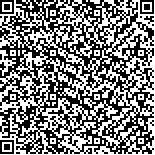本文已被:浏览 564次 下载 349次
Received:October 19, 2019 Published Online:July 20, 2020
Received:October 19, 2019 Published Online:July 20, 2020
中文摘要: 目的 探讨128排螺旋CT参数与血清细胞因子[同型半胱氨酸(Hcy)、基质金属蛋白酶-9(MMP-9)、肿瘤坏死因子-α(TNF-α)]的相关性及在冠状动脉非钙化斑块诊断中的价值。
方法 选择2017年1月至2019年4月150例冠心病患者为研究对象,比较稳定性心绞痛(SAP)、不稳定性心绞痛(UAP)患者斑块分布情况。根据CT值区分斑块性质[CT值≥130 Hu为钙化斑块,60~129 Hu为混合斑块,<60 Hu为易损斑块;易损与混合斑块均为非钙化斑块],比较不同性质斑块患者血清Hcy、MMP-9、TNF-α水平、CT值,以Logistic多元回归分析非钙化斑块发生的影响因素,用Pearson分析斑块CT值与血清Hcy、MMP-9、TNF-α水平的相关性,绘制血清Hcy、MMP-9、TNF-α的ROC曲线,分析其诊断非钙化斑块的价值。
结果 UAP患者易损斑块发生率高于SAP患者、钙化斑块发生率低于SAP患者(P<0.01);非钙化斑块患者血清Hcy、MMP-9、TNF-α水平较钙化斑块患者高,其斑块CT值较钙化斑块低(P均<0.01);高水平的血清Hcy、MMP-9、TNF-α均为非钙化斑块发生的危险因素(OR=3.356、2.622、1.763,P均<0.01);血清Hcy、MMP-9、TNF-α水平与斑块CT值分别呈负相关(P均<0.01);取各自最佳截断值时,MMP-9、Hcy、TNF-α诊断非钙化斑块的ROC曲线下面积分别为0.820、0.778和0.733,三者对非钙化斑块均有较高诊断价值。
结论 血清Hcy、MMP-9、TNF-α水平高为冠心病非钙化斑块发生的重要危险因素,均与斑块CT值呈负相关,检测患者血清Hcy、MMP-9、TNF-α水平,可用于冠脉非钙化斑块形成的评估,为临床干预提供有价值参考。
中文关键词: 电子计算机X线断层扫描 同型半胱氨酸 基质金属蛋白酶-9 肿瘤坏死因子-α 冠状动脉非钙化斑块
Abstract:Objective To investigate the associations of 128-slice CT scanning parameters with serum cytokines(Hcy,MMP-9 and TNF-α) and its value for detection of non-calcified plaques(NCPs) in coronary arteries.
Methods A total of 150 patients with coronary heart disease from January 2017 to April 2019 were selected and divided into stable angina pectoris(SAP) group and unstable angina pectoris (UAP) group for comparing the distribution of plaque in coronary arteries.According to the CT value of the plaque properties,there were calcified plaque (CT value≥130 Hu),mixed plaque (CT value from 60 Hu to 129 Hu ) and vulnerable plaque (CT value <60 Hu).The serum levels of Hcy,MMP-9,TNF-α and CT values were compared in the patients with different plaques.Multiple logistic regression equation was used to analyze the factors influencing the occurrence of non-calcified plaques;the correlation between the CT value of plaques and the serum levels of Hcy,MMP-9 and TNF-α was analyzed;ROC curves of serum Hcy,MMP-9 and TNF-α were drawn to analyze their values in the diagnosis of non-calcified plaques.
Results The incidence of vulnerable plaque in UAP patients was higher than that in SAP patients,and the incidence of calcified plaques was lower than that in SAP patients (P<0.01).Compared with the patients with calcified plaques,the levels of serum Hcy,MMP-9 and TNF-α increased,and CT values of plaque decreased in NCPs patients (all P<0.01).High serum levels of Hcy,MMP-9,TNF-α were the risk factors of NCPs(OR=3.356,2.622,1.763,all P<0.01),and they were negatively correlated with CT values of plaque (all P<0.01).When the best cutoff values were taken,the AUC of MMP-9,Hcy and TNF-α for the diagnosis of NCPs were 0.820,0.778 and 0.733,respectively,and all of which had high diagnostic value.
Conclusions High serum Hcy,MMP-9 and TNF-α levels are the important risk factors for NCPs and are negatively correlated with CT value of plaque.Detection of serum Hcy,MMP-9 and TNF-α can be used to evaluate the formation of NCPs in coronary artery and provide valuable reference for clinical intervention.
keywords: Computed tomography Homocysteine Matrix metalloproteinase-9 Tumor necrosis factor-α Coronary artery non-calcified plaque
文章编号: 中图分类号: 文献标志码:B
基金项目:
引用文本:
